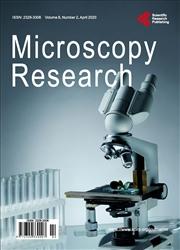Effects of Ingested Baccharis dracunculifolia D.C. (Asteraceae) Extract in the Liver of Prochilodus lineatus Fish
引用次数: 0
Abstract
Baccharis dracunculifolia, popularly known in Brazil as “alecrim-do-campo”, is widely recognized for its therapeutic potential. The extract of its leaves is used for liver problems, stomach disorders and others. The objective of the present study was to perform a histochemical analysis of curimbata fish livers to evaluate the potential effects and risks of the ingestion of B. dracunculifolia. Thirty-two animals were divided into two experimental groups in duplicate: Control group (regular food) and B. dracunculifolia Treated group (food added with B. dracunculifolia). The fishes were collected on the 14th and 21st days after the treatment period of 21 days. The histological alterations were evaluated using the semiquantitative methods Mean Value of Alterations (MVA), Histopathological Alteration Index (HAI) and Image J®. HAI and MAV showed that the extract caused slight but statistically significant damages, widely distributed throughout the organ. The results showed significant hepatic alterations caused by the ingestion of B. dracunculifolia extract.龙血藤提取物对线原体鱼肝脏的影响
龙血藤,在巴西被普遍称为“alecrim do campo”,因其治疗潜力而被广泛认可。它的叶子提取物用于治疗肝脏问题、胃部疾病和其他疾病。本研究的目的是对curimbata鱼肝脏进行组织化学分析,以评估摄入龙血藤的潜在影响和风险。32只动物分为两个实验组,一式两份:对照组(常规食物)和龙血藤治疗组(添加龙血藤的食物)。在处理21天后的第14天和第21天采集鱼类。使用半定量方法平均改变值(MVA)、组织病理学改变指数(HAI)和图像J®评估组织学改变。HAI和MAV表明,提取物引起轻微但具有统计学意义的损伤,广泛分布于整个器官。结果显示,摄入龙血藤提取物会导致肝脏发生显著变化。
本文章由计算机程序翻译,如有差异,请以英文原文为准。
求助全文
约1分钟内获得全文
求助全文

 求助内容:
求助内容: 应助结果提醒方式:
应助结果提醒方式:


